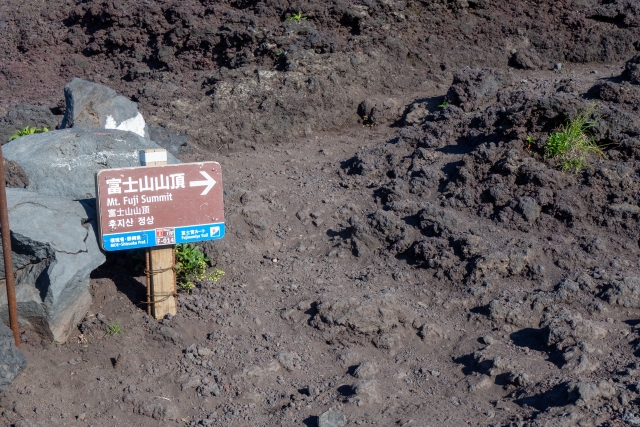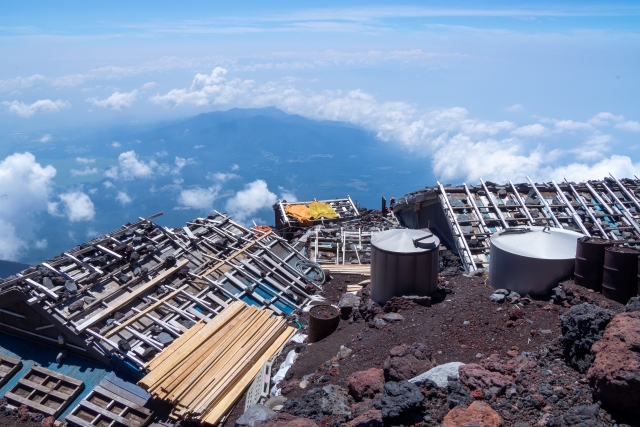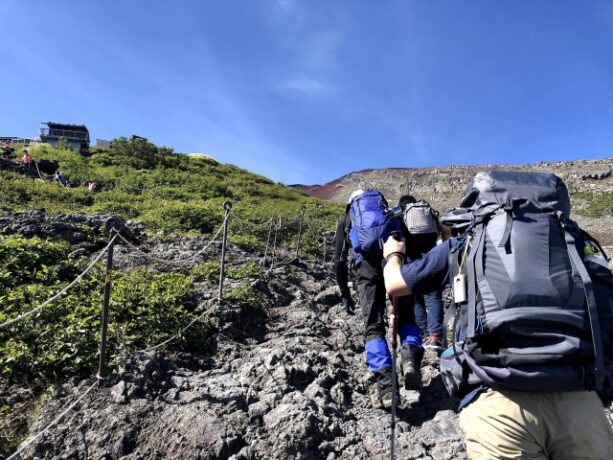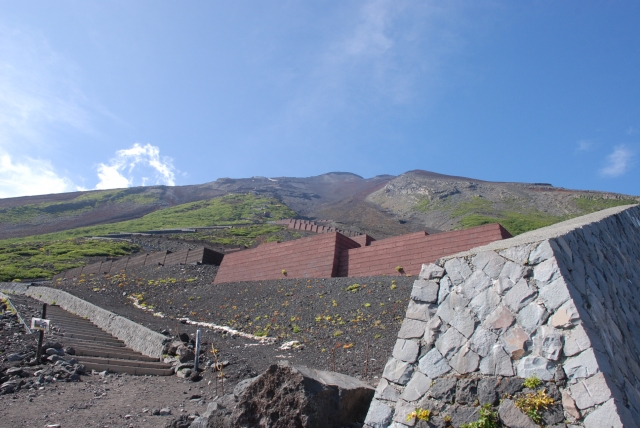Prologue
Almost a month has passed since the opening of Mt. Climbing.
However, news of casualties from accidents and other incidents on Mt. Fuji are reported.
Unfortunately, six people have lost their lives this year already.
Here is a brief summary of the risks and preparations for climbing Mt. Fuji.
Before climbing Mt. Fuji, please research the details in a mountaineering book and be well prepared.
There are many articles on social media that say it was easy to climb Mt. Fuji, but this was just luck. It seems better not to believe the frivolous posts on social media and to prepare properly.
Climbing Season and Routes
The climbing season for Mt. Fuji is from July 1 to September 10 each year. During this period, the snow melts, the trails and mountain lodges are open, and many climbers visit the mountain. The four main climbing routes are as follows

Climbing routes on Mt. Fuji.
Yoshida Route (Yamanashi side) Course time: 11 hours 35 minutes, 17.4 km
Susugi Route (Yamanashi Prefecture side) course time: 12 hours 16.1 km
Fujinomiya route (Shizuoka Prefecture side) course time 10 hours 55 minutes 12.2km
Gotemba Route (Shizuoka Prefecture side) course time: 14 hours, 5 minutes, 20.8km
Each route has different characteristics. The Yoshida Route is relatively suitable for beginners and has many mountain lodges.
The Gotemba route is longer and more difficult.
Some fast climbers may be able to climb faster than the course time. However, due to the recent increase in the number of climbers, there may be traffic jams along the way and you may have to stop to go up, so please make sure you have enough time to spare before climbing.

In this regard, it is recommended to plan to stay overnight at a mountain lodge to allow enough time for the climb.
Weather Conditions
The minimum temperature in summer is 4 degrees Celsius or lower in August, and 3 degrees Celsius or lower in July. The maximum temperature is only 9.5 degrees Celsius.
Add to this the wind, and you can say that it is quite cold.
There are no mountains around Mt. Fuji.
Mt. Fuji is always windy, with winds blowing from the west-northwest or westerly throughout the year, with an average annual wind speed of 12 meters per second.
Relationship between physical sensation and wind Generally speaking, it is said that a wind speed of 1 m/s lowers the temperature of the body by 1°C. In other words, when the temperature is 4°C, the body temperature drops by 1°C.
In other words, if the wind speed is 12 m/s when the temperature is 4°C, the temperature you feel is -8°C.
This is the temperature in the middle of winter, so you need to prepare your clothing for midwinter temperatures.
Basically, it is best to consider two days and one night at a mountain lodge as standard.
Unfortunately, weekends during the summer climbing season are as crowded as Ginza.
Some people get sick because there are so many people that they cannot climb at their own pace.
There used to be many people who climbed the mountain in a hurry, called “bullet climbing,” but the number of people who climb with much more time to spare has been increasing.
Height effect
The tallest building in the world is the Burj Khalifa in Dubai, the central city of the United Arab Emirates. It is 828 m high and has 206 floors. Considering the climb from Fuji-Yoshida (2305m at the 5th station of Fuji-Subaru Line) to the top of Mt. Fuji (3776m), it is just 1471m, which is about 400 floors higher than the UAE building mentioned above.
Considering the Fujinomiya route starting at 2400m, the elevation difference is 1386m
The course time is about 11 hours (not including breaks), so you should consider that it will take longer if you consider breaks and traffic time due to congestion in this time.
What to bring

Prepare equipment: Bring a headlamp, extra batteries, first aid kit, map and compass. You will also need rain gear and warm clothing to keep you warm.
Food: Energy bars, nuts, dried fruit, and other high-calorie snacks.
Water: Carry at least 2 liters of water per person. You can replenish at the lodge, but allow plenty of room just in case.
Use of guides
First-time climbers and inexperienced climbers may need to hire a professional guide.
Professional guides are well-versed in handling emergencies, understanding the climbing route, and judging the weather.
After all, guides know the way well and can provide you with a safe and secure climb up Mt. Fuji.
Submitting a Climbing Plan
As is the case with climbing any mountain, it is necessary to submit a mountaineering plan when climbing Mt. Fuji.
Before climbing the mountain, inform your family and friends of your climbing plan and submit it to the mountaineering office to be prepared in case of an emergency.
The people who go out to rescue you also say it will help.

Conclusion
Climbing Mt. Fuji is a very attractive mountain even if you only view it from afar.
And climbing that beautiful mountain is quite an adventure.
Especially when you consider that you will be traveling up the mountain from overseas, you need to be very fit and careful.
In order to have a safe and enjoyable climbing experience, let’s understand the current situation and take appropriate measures.
